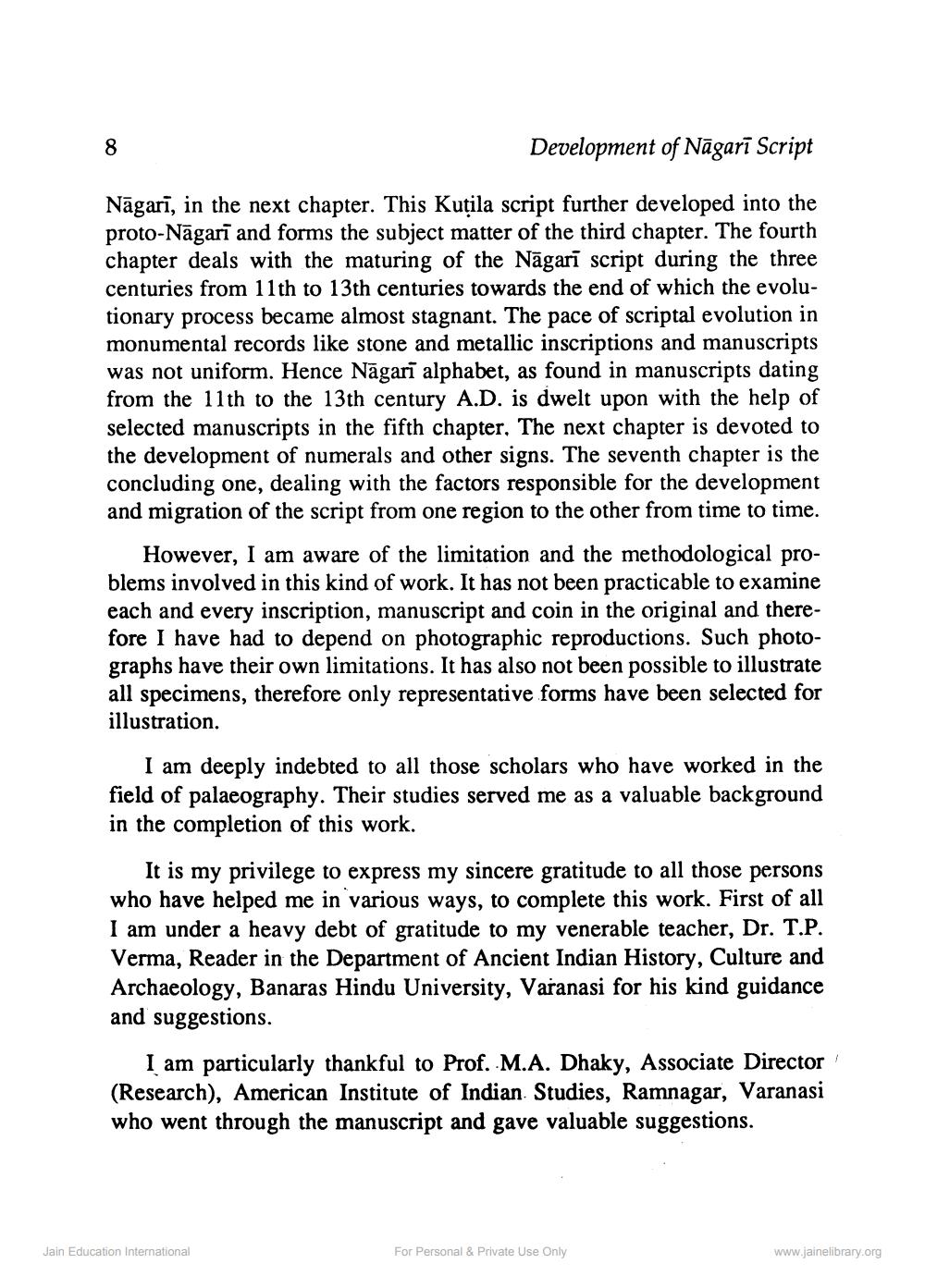________________
Development of Nāgarī Script
Nāgarī, in the next chapter. This Kutila script further developed into the proto-Nāgarī and forms the subject matter of the third chapter. The fourth chapter deals with the maturing of the Nagarī script during the three centuries from 11th to 13th centuries towards the end of which the evolutionary process became almost stagnant. The pace of scriptal evolution in monumental records like stone and metallic inscriptions and manuscripts was not uniform. Hence Nagarī alphabet, as found in manuscripts dating from the 11th to the 13th century A.D. is dwelt upon with the help of selected manuscripts in the fifth chapter. The next chapter is devoted to the development of numerals and other signs. The seventh chapter is the concluding one, dealing with the factors responsible for the development and migration of the script from one region to the other from time to time.
8
However, I am aware of the limitation and the methodological problems involved in this kind of work. It has not been practicable to examine each and every inscription, manuscript and coin in the original and therefore I have had to depend on photographic reproductions. Such photographs have their own limitations. It has also not been possible to illustrate all specimens, therefore only representative forms have been selected for illustration.
I am deeply indebted to all those scholars who have worked in the field of palaeography. Their studies served me as a valuable background in the completion of this work.
It is my privilege to express my sincere gratitude to all those persons who have helped me in various ways, to complete this work. First of all I am under a heavy debt of gratitude to my venerable teacher, Dr. T.P. Verma, Reader in the Department of Ancient Indian History, Culture and Archaeology, Banaras Hindu University, Varanasi for his kind guidance and suggestions.
I am particularly thankful to Prof. M.A. Dhaky, Associate Director (Research), American Institute of Indian Studies, Ramnagar, Varanasi who went through the manuscript and gave valuable suggestions.
Jain Education International
For Personal & Private Use Only
www.jainelibrary.org




